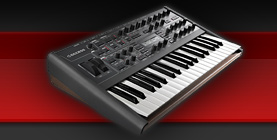

|
|||||||
| General discussion about Access Virus Discussion about Virus A, B, C and TI. |
 |
|
|
Thread Tools | Search this Thread | Display Modes |
|
#1
|
||||
|
||||
|
I'm curious as to what people are using successfully with a TI2 for long cable lengths. I need to find a solution for a 25 ft. USB connection from the keyboard to the computer in a studio. I know USB specs max out at 16.5 ft. and using a USB hub is a no no, but how are people getting around this?
__________________
Joshua Aaron President/Chief Engineer AudioLot/AudioLot Studios High End Pro Audio Sales & Consulting http://www.audiolot.com AudioLot is an authorized Access dealer Follow us on Facebook for weekly gear specials and the latest news |
|
#2
|
|||
|
|||
|
Is USB working properly for you with the max spec'd length on the TI2? If yes, what computer and DAW are you using?
|
|
#3
|
||||
|
||||
|
Yes, it works perfectly. The cable that came with the TI2 Keyboard caused tons of issues but once I replaced that cable with a higher quality one, everything has been working really well.
__________________
Joshua Aaron President/Chief Engineer AudioLot/AudioLot Studios High End Pro Audio Sales & Consulting http://www.audiolot.com AudioLot is an authorized Access dealer Follow us on Facebook for weekly gear specials and the latest news |
|
#4
|
|||
|
|||
|
PC or Mac? Which host(s)?
|
|
#5
|
||||
|
||||
|
Mac based Pro Tools HD
__________________
Joshua Aaron President/Chief Engineer AudioLot/AudioLot Studios High End Pro Audio Sales & Consulting http://www.audiolot.com AudioLot is an authorized Access dealer Follow us on Facebook for weekly gear specials and the latest news |
|
#6
|
|||
|
|||
|
Interesting.
Around here, I think those who have had success with TI/TI2 USB integration are few and far between, so while I know it doesn't help answer the original question, I think you're one of the lucky ones in that that it works as designed for you, so pushing it beyond the as-designed specs seems like a bit of a long shot, but best of luck to you. I was one of the unfortunate ones that could not achieve an acceptable level of latency over USB so I returned my TI2 , to wait for a day when either USB was more reliably implemented or supplanted by a faster technology (that was about four years ago so I'm no longer holding my breath). |
|
#7
|
||||
|
||||
|
And it must be three, possibly four years ago now, yet you're still dripping on about it like a tap. Maybe we're the unfortunate ones. Getting seriously bored, MB.
__________________
PS > And another thing! Will the Ti|3 have user customisable/importable wavetables? |
|
#8
|
|||
|
|||
|
Quote:
I wasn't dripping about anything here, I was asking the guy his secret sauce for success with USB since it seems rare around here. I read more from folks with USB issues than success, so when someone has success I'd like to know what worked for them. Has the integration improved in the last 3-4 years? If so, where can I see a list of what was fixed? I'm genuinely interested in that. If it hasn't been fixed, and it's still true that more people have issues than success, then someone should drip about it until Access does something about it. I commented about that fact here, because I think his chances of success with a longer cable are slim. Not sure why you're making more of it than that. |
|
#9
|
||||
|
||||
|
The reason for his success is simple. He is running a pro tools HD system which means all the processing power the DAW needs comes from dedicated hardware/pci cards & not the host computer so freeing up most of the computers resources to run VC.
On another note pro tools have now developed a new 64 bit plug in format called aax that a lot of my plug in's are now compatible with. There has been a few people on the official forum asking if access will be making an aax version of VC but no news so far.
__________________
___________________________________________ http://www.youtube.com/user/djbernidotcom http://soundcloud.com/dj-berni-2 http://www.flickr.com/photos/djberni/ http://www.mixcloud.com/dj_berni/ |
|
#10
|
|||
|
|||
|
Quote:
|
 |
«
Previous Thread
|
Next Thread
»
| Thread Tools | Search this Thread |
| Display Modes | |
|
|
All times are GMT. The time now is 12:46 PM.
Powered by vBulletin® Version 3.6.4
Copyright ©2000 - 2025, Jelsoft Enterprises Ltd.
Skin Designed by: Talk vBulletin
Copyright ©2000 - 2025, Jelsoft Enterprises Ltd.
Skin Designed by: Talk vBulletin
Copyright ©2002-2022, Infekted.org
 |
 |








 Linear Mode
Linear Mode

